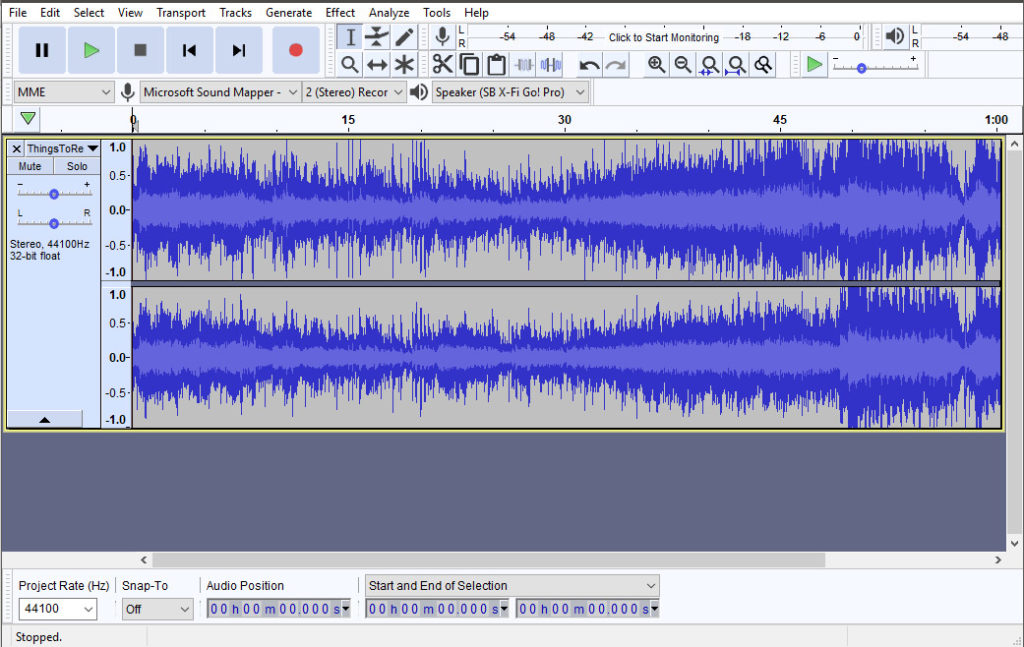

- #Microsoft sound mapper missing how to#
- #Microsoft sound mapper missing install#
- #Microsoft sound mapper missing drivers#
- #Microsoft sound mapper missing windows 10#
- #Microsoft sound mapper missing software#
In days of old, Sound Mapper could also be used to play back 16-bit files on 8-bit only soundcards, or stereo files on mono-only soundcards. However, if you choose Microsoft's Sound Mapper, it will use Microsoft's various codecs (coder-decoder algorithms) to convert this sample rate and bit-depth on-the-fly to one that is supported by your interface.
#Microsoft sound mapper missing drivers#
For instance, attempting to play back an old 8-bit/11kHz multimedia file on ASIO drivers will often result in an error message, because most modern audio interfaces only support sample rates of 32kHz and above at either 16-bit or 24-bit resolution. It can be handy to select Sound Mapper in your audio application to enable an audio interface to run audio files at sample rates other than those the interface supports. However, it isn't really a driver, but a virtual device installed automatically with Windows, which simply results in your application using whatever default devices you've already chosen for both sound recording and sound playback in the Control Panel's 'Sounds and Audio Devices' applet.
#Microsoft sound mapper missing install#
Microsoft's Sound Mapper (which sometimes appears in audio applications as 'MME-WDM Microsoft Sound Mapper' or simply 'Wave Mapper') often becomes the default driver for both audio playback and recording after you install a new audio application, and it may if you've recently installed a new audio interface. If you see several entries relating to your audio interface, always use the one containing 'ASIO' in preference to any MME-WDM ones, as they will provide significantly lower latency. So to cure your problem just open up the Sound Forge audio preferences dialogue and specifically select your audio interface as the playback device. PC music specialist Martin Walker replies: For once, this is an easy question to answer, since the only way you can get a 'Microsoft Sound Mapper' error is if you've selected this named option in Sound Forge as either your recording or playback device. For example, if you need to play old multimedia files, Sound Mapper can be used, as it can play back files with sample rates as low as 6kHz. Now that the majority of audio interfaces have ASIO drivers, Microsoft's Sound Mapper device is almost completely redundant.
#Microsoft sound mapper missing how to#
Could you guide me on how to solve this problem? I have no idea what Microsoft Sound Mapper is.

It said that the Microsoft Sound Mapper does not recognise or support this application due to rates and frequency settings. Your reply is most important for us to ensure we assist you accordingly.I use Sound Forge to record on to my laptop, and until very recently it's been working fine - until an error popped up when I opened the program. Write to us with the status of the issue on the same post for further assistance. Make older programs compatible with this version of Windows
#Microsoft sound mapper missing windows 10#
As Windows 10 is new most of the drivers may not be available which are compatible with Windows 10.
#Microsoft sound mapper missing software#
You may be facing the above issue due to incompatibility of the software with Windows 10 OS. We regret the inconvenience caused and will assist you in resolving the issue. Thank you for posting on Microsoft Community.


 0 kommentar(er)
0 kommentar(er)
